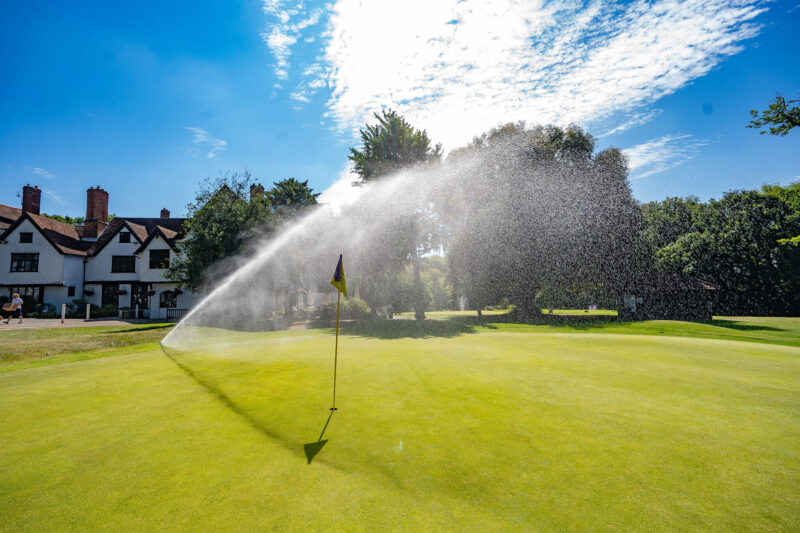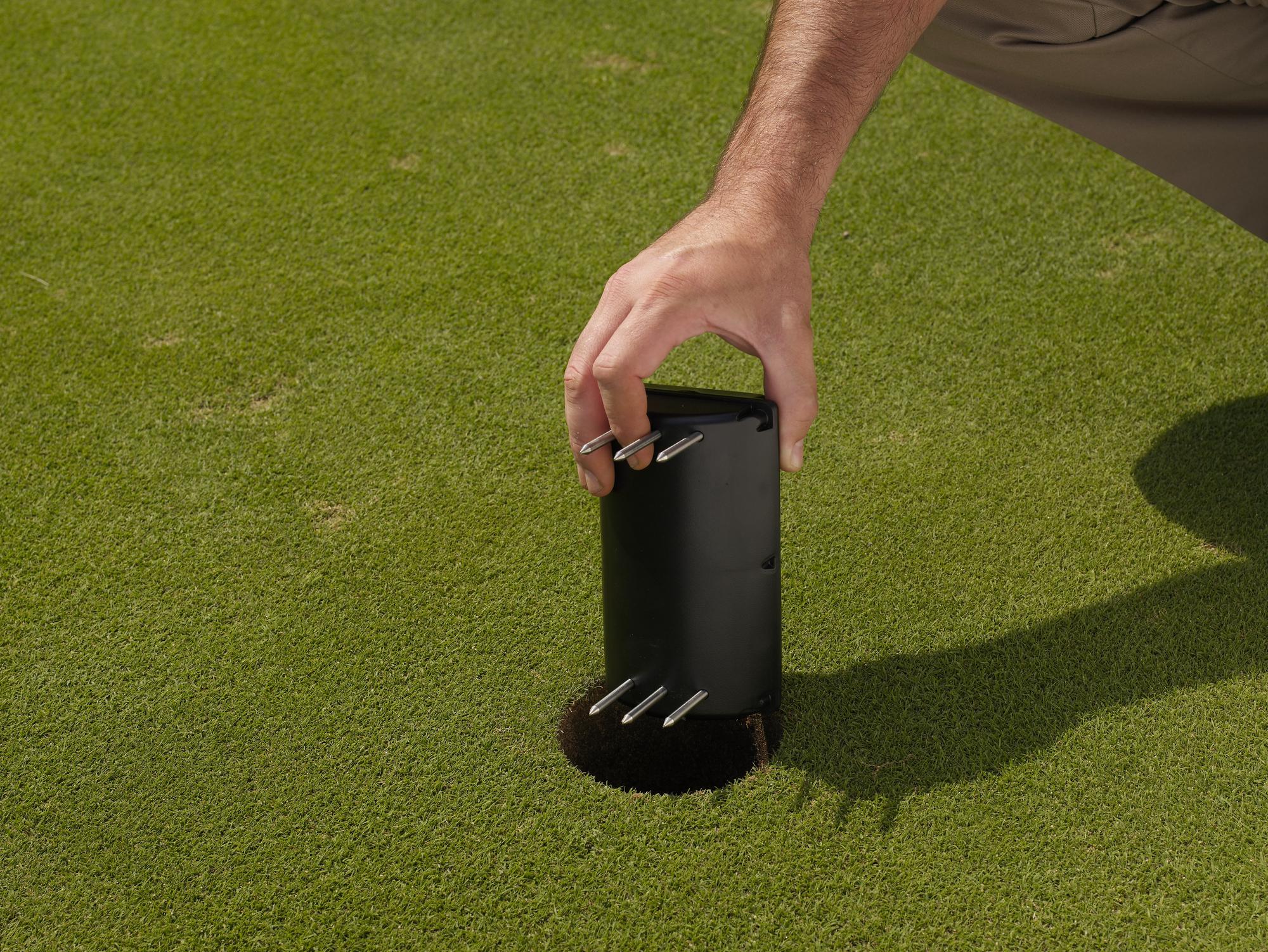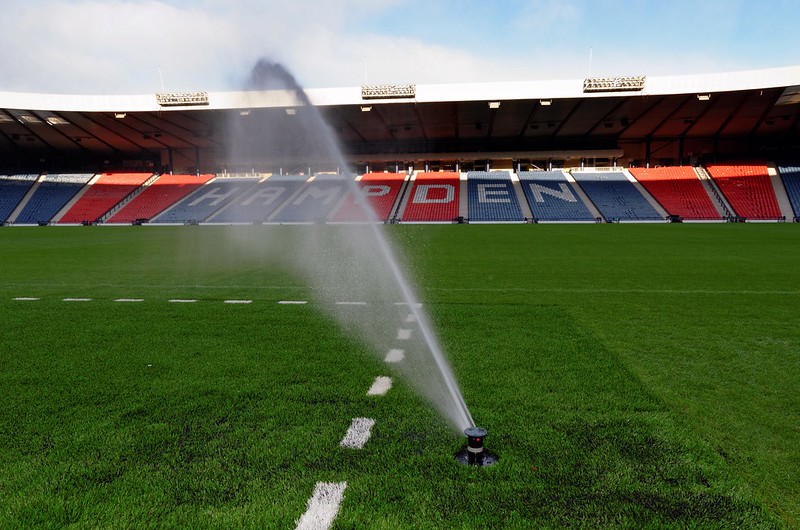Inside irrigation for summer months
Top tips for irrigation during warm weather
During the summer months, when temperatures begin to rise, it’s essential greenkeepers and grounds teams have a good handle on – and understanding of – their turf’s irrigation needs.
Along with preparing turf for maintenance work, such as aeration and fertiliser application, maintaining healthy grass growth, facilitating a level of impact absorbency, and germinating seed, summer is also a great time for planning ground management improvements for the upcoming sporting seasons.

Four top tips to improve sports turf irrigation during warmer weather
Experts in promoting optimum grass growth, balancing soil moisture levels, and improving water efficiency, at Reesink Hydro-Scapes, we have decades of experience in contracting and creating irrigation design specifications for sports and golf courses installations.
So, here are our four top tips for better irrigation and water management during summer.
1. Remember to monitor your soil’s moisture levels
Knowing what’s going on beneath your turf is an integral part of good irrigation management – and moisture content comes top of the list.
Having soil moisture level knowledge will allow you to make timely, informed adjustments to your irrigation schedule. This can help create and retain optimum conditions for the surface and root zone.
Soil moisture levels can also highlight other issues, including potential turf stress, drainage problems and irrigation uniformity.
How to properly monitor soil moisture
Greenkeepers and grounds teams rely on a combination of experience and on-site weather data to determine irrigation requirements. However, the only way to accurately measure soil moisture content and avoid over-irrigating is to utilise modern technology.
Systems that feature soil-monitoring technology can help you make better decisions and, ultimately, save money.
Whether using a handheld sensor to perform regular spot checks or an irrigation system with ground sensors that do it for you, precise measurements for soil moisture and surface temperature provide invaluable data that you can harness to improve your turf.
From avoiding over-watering to detecting dry areas before the turf’s health is impacted, spot checks and irrigation sensors can also help in reducing water usage, which is a key aspect of any club’s sustainability protocol.

2. Take frequent moisture and temperature readings and compare data
Routinely monitoring the moisture content and temperature of the root zone will help keep your turf healthy, but it will also ensure you’re only watering when necessary.
That’s why we recommend taking multiple readings and at different times – such as before and after irrigation, rainfall, frost; and on cold days and hot days. This allows you to put each reading into context and understand how environmental factors influence those data points.
Once you’re able to determine your turf’s normal range and variability, you can recognise changes due to potential problems.
These can be identified before they develop too far, which is particularly important in the case of disease. Any early identification of problems saves both the cost and time associated with fixative measures.
3. Invest in flexible sprinkler heads for greater flexibility and cost-savings
The FA and Football Foundation recommend automatic pop-up irrigation systems and for good reason.
There’s a wide range of quality sprinklers available on the market from big names like Toro, and sprinklers with adjustable heads, from part- to full-circle operation, provide incredible flexibility for greenkeepers and grounds teams.
Flexible sprinkler heads allow for extremely efficient water application and uniformity in virtually any site application or need.
Trajectory options also help fight the wind, avoid obstacles, and allow you to reduce the radius quickly. Moreover, sprinklers with easy access to all the critical components will also cut sprinkler maintenance from hours to minutes – and save unsightly turf repair scars.
‘Forwards compatible’ sprinklers are another great option because they make enhancing existing sprinkler heads with new, improved, redesigned, or upgraded systems easy, quick, and economical.
Some are also backwards compatible, too, for easy retrofit instals – and having that level of flexibility saves money in the long term.

4. Always use water as efficiently as possible when irrigating
Sports pitches, and golf courses in particular, tend to generate a lot of attention when it comes to water-savings and sustainability efforts. But, in general, many sites in the UK are already great examples of water use efficiency and savings.
Using the latest irrigation technology and innovation, turfcare professionals can significantly cut their water use and maintain optimal playing conditions.
Aside from the importance of protecting water resources, applying water efficiently – using both knowledge and innovative irrigation technology – saves money and improves growing conditions.
What irrigation technology can help reduce water usage?
Having a fully functional control system like Toro’s Lynx system will also ensure only the required amount of water is being applied, while the information that can be taken from a soil monitoring system will also cut back on over watering.
Sprinklers are key contributors to water use reduction. As irrigation control systems have advanced over the years, so have the sprinklers they control.
Use sprinklers that have nozzle options and adjustment capabilities to apply water precisely where it is needed. Simply upgrading older sprinklers to new models can significantly reduce water use, without affecting play.
Employing good maintenance practices, such as aeration, which encourages deep rooting grasses and penetration of any water applied, will also minimise the amount of water used.
Finally, it’s important to have your irrigation assessed to identify areas for improvement. If this is of interest, or if you have any other queries, do get in touch with us at Reesink Hydro-Scapes on 01480 226948.